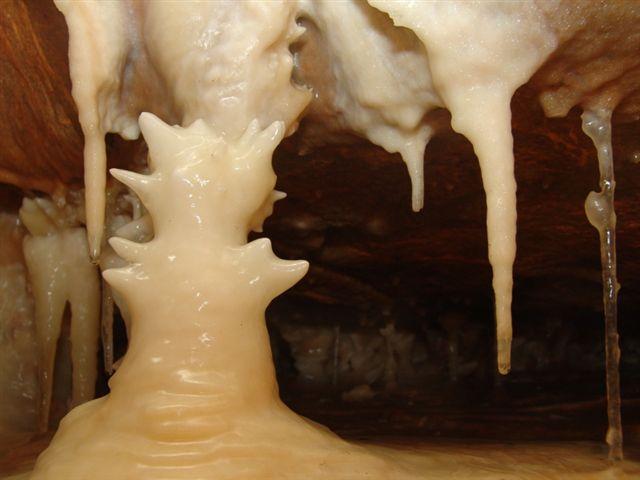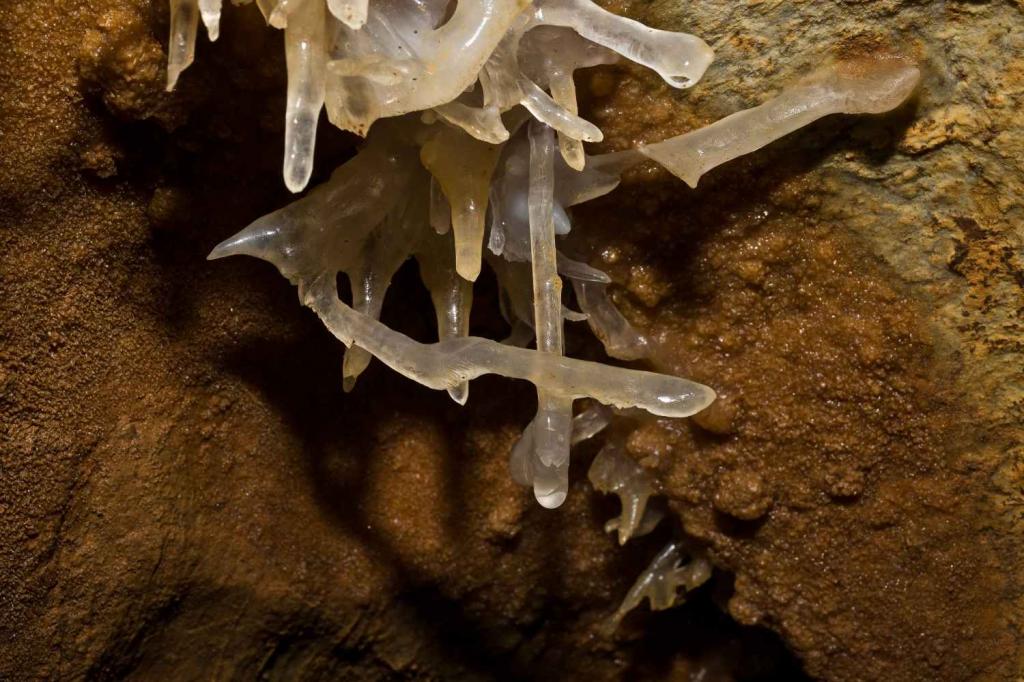Javoříčko (Javoříčské) Caves - Natural conditions

GEOLOGICAL DEVELOPMENT OF THE AREA
The area of the Javoříčko Karst is remarkable for its extreme geologic diversity. The subsoil of the area is formed by rocks of Nectava (predominantly gneissose granites), Kladky (predominantly phyllites and phyllonites) and Svinov-Vranová (predominantly mica schists) crystalline units, probably of Proterozoic age. During the Early Devonian time, the deposition of conglomerates (basal clastic), later of shales, siltstones and sandstones resulted. Just before the beginning of carbonate sedimentation, outbursts of basic volcanics, which can now be found in the form of metabasites and their tuffs, occurred in the area. In the Middle Devonian, the deposition of limestones of the Macocha Formation, today with the thickness up to several hundreds of metres, predominated. The limestones emerge in several islets. The most extensive one comprises the Špraněk and Kadeřín hills.
In the Late Devonian time, sedimentation of non-carbonate rocks – shales, conglomerates, siltstones, greywackes – prevailed and with some interruptions it continued until the end of the Paleozoic. Carbonate sedimentation is represented by limestones of the Ponikev and Líšeň formations. During the Mesozoic time, sedimentation predominantly in the Late Cretaceous occurred. It is now represented by sandstones, siltstones and marlites. In the Tertiary period there was a significant Badenian marine flooding documented by beds of calcareous clays – tegels.
STALACTITE AND STALAGMITE DECORATION OF THE JAVOŘÍČKO CAVES
The spaces under the Špraněk Hill are a genuine encyclopaedia of stalactite and stalagmite shapes. Even during the first days of work undertaken to make the cave accessible to visitors, various colourful sinter shapes were wisely protected. Thousands of fine straws decorating the ceilings of underground halls are absolutely different in their proportions at different places. Numerous shapes of stick and carrot stalactites change to eccentric stalactites. Huge sinter cupolas are completed with groups of stick stalagmites and walls are covered with hundreds of square metres of rimstone cascades and sinter coatings. Also, we cannot forget the curtains and spherical stalactites. The Javoříčko Caves with their stalactite and stalagmite decorations belong among the most beautiful ones in the Czech Republic.

ECCENTRISM OF THE JAVOŘÍČKO CAVES
Eccentric stalactites, also called helictites, are formations of secondary cave fills growing against the laws of gravity. The finest fibrous forms of helictites are thinner than 1 mm; they are variously, e.g. spirally, twisted or they grow in another direction than vertically downward. The eccentricity is also expressed in more massive and variously curved stalactites. Many factors participate in the creation of these forms. The curved growth used to be connected with a strong flow of air. As long as dripping water in the cave squirts under pressure, stalactite nodulations are formed on the walls or even on vertically growing stalactites.
The formation of helictites can also be caused by the presence of impurities or foreign ions in the crystal grid of calcite. Eccentric stalactites can be seen in many places of the underground system of the Javoříčko Caves, even in large groups. The accumulation of helictites is highest especially in ceiling parts of the Jeskyně míru Caves.